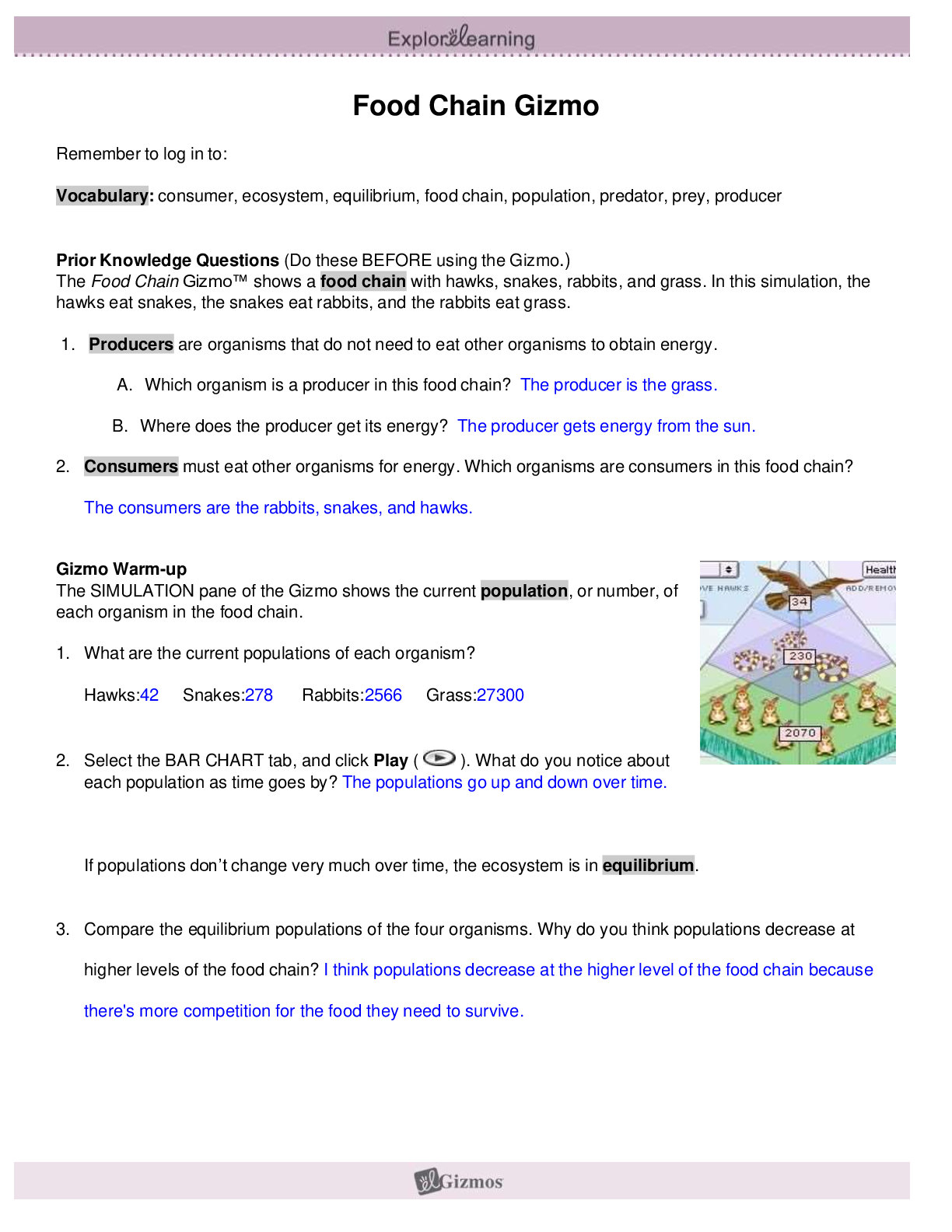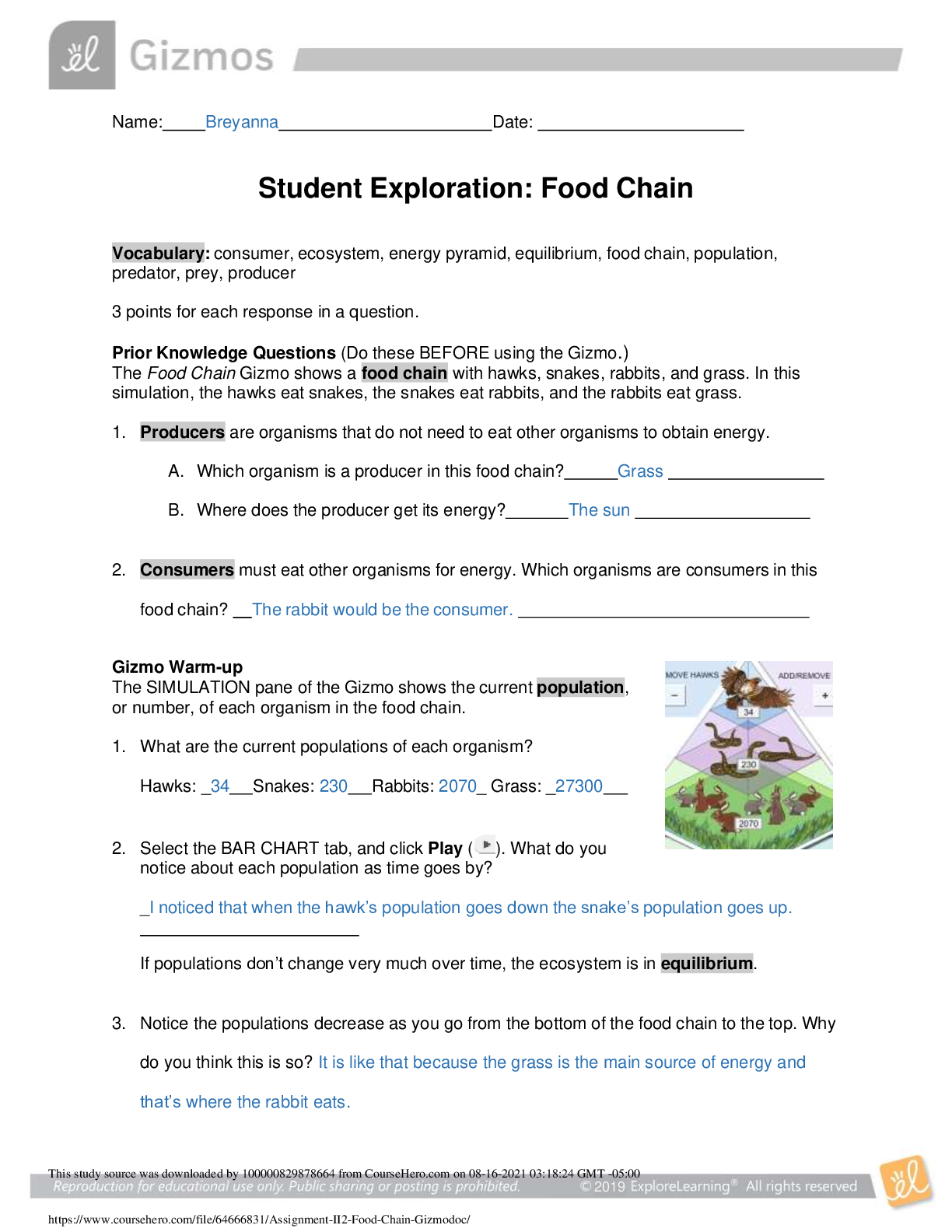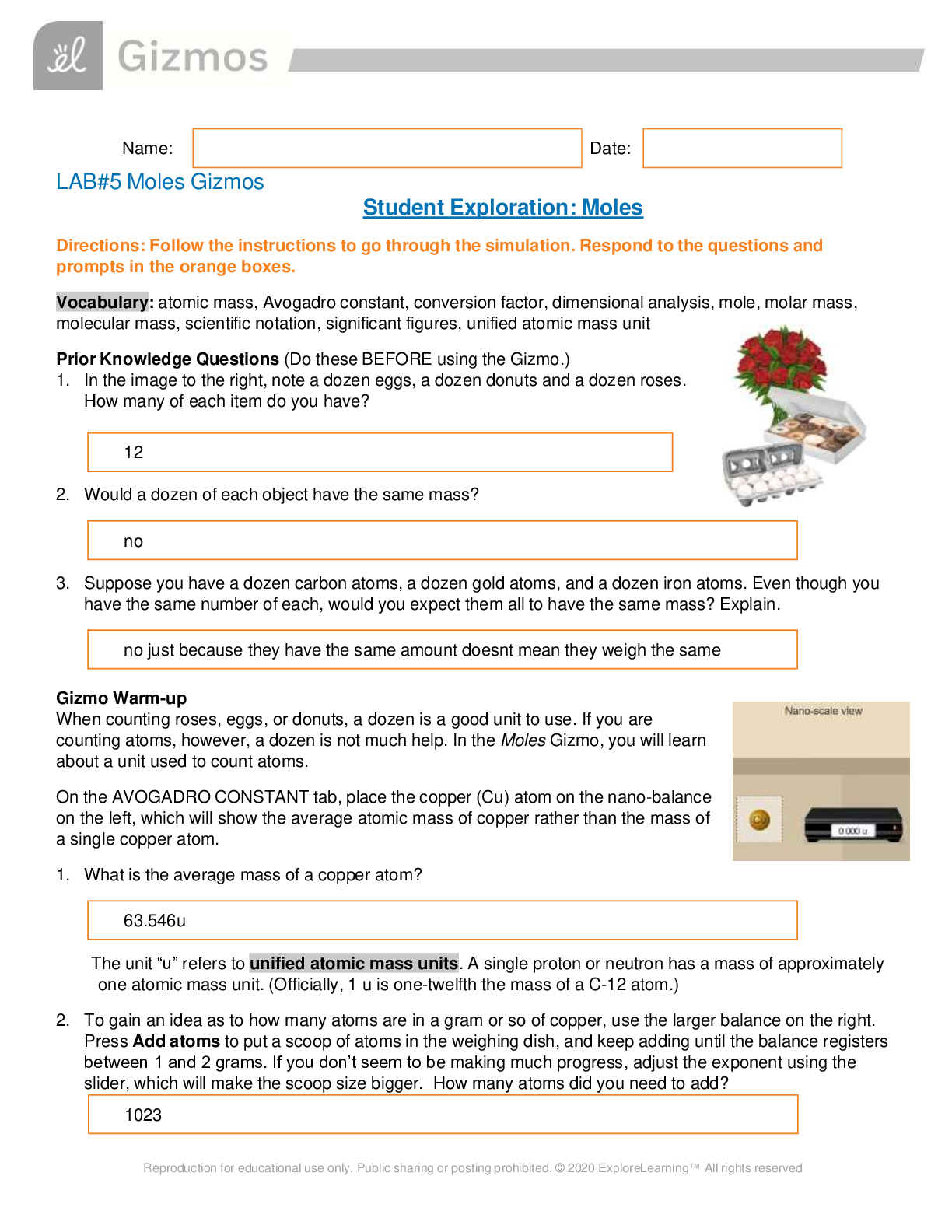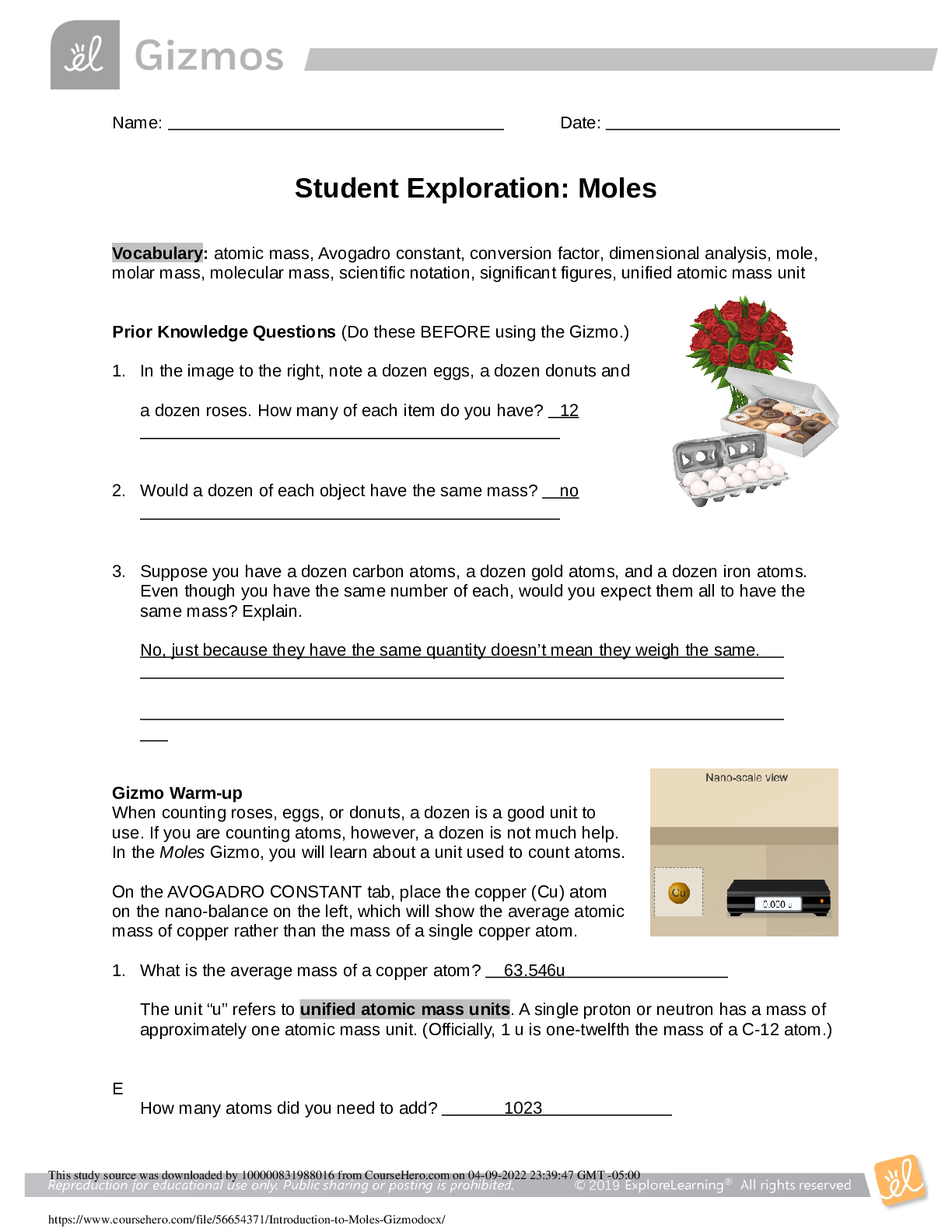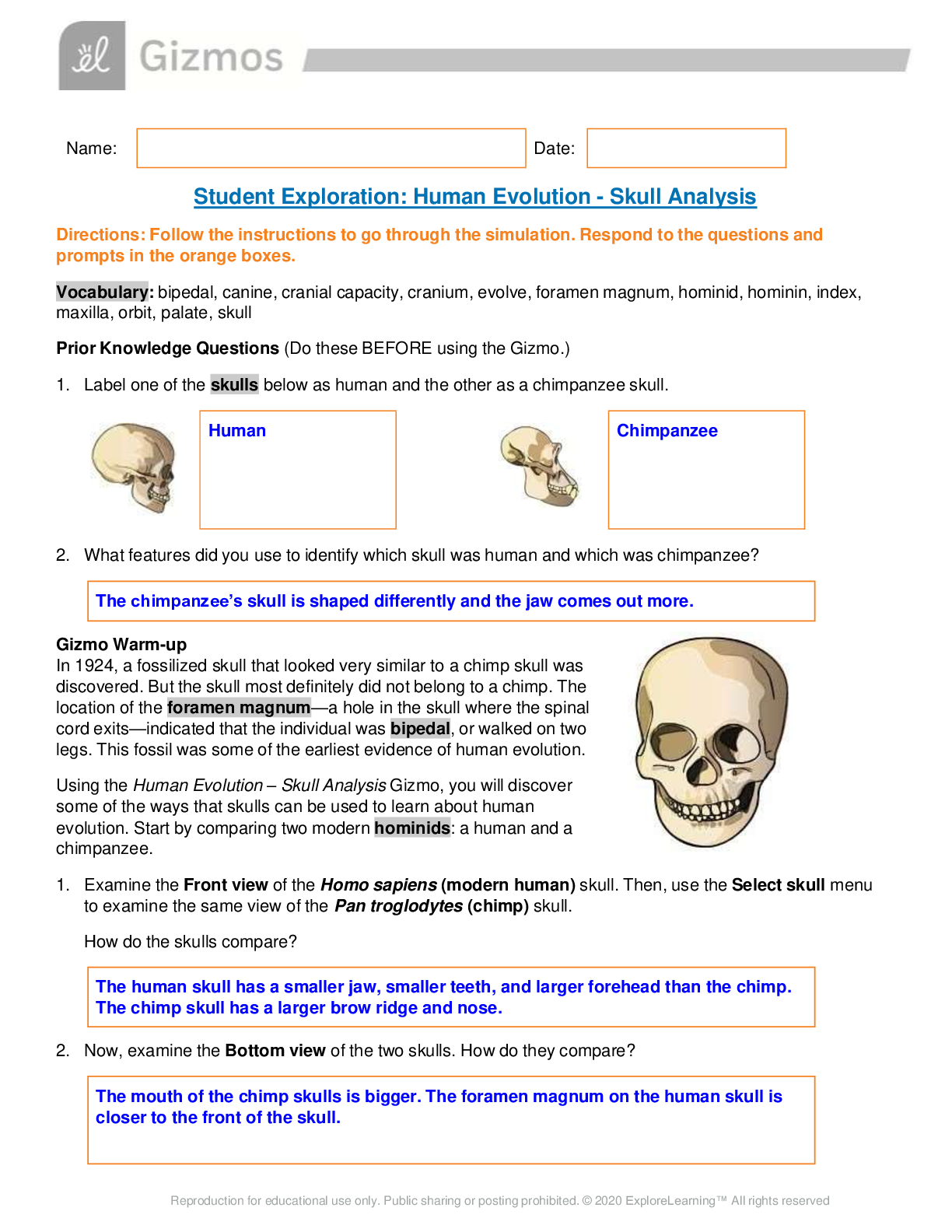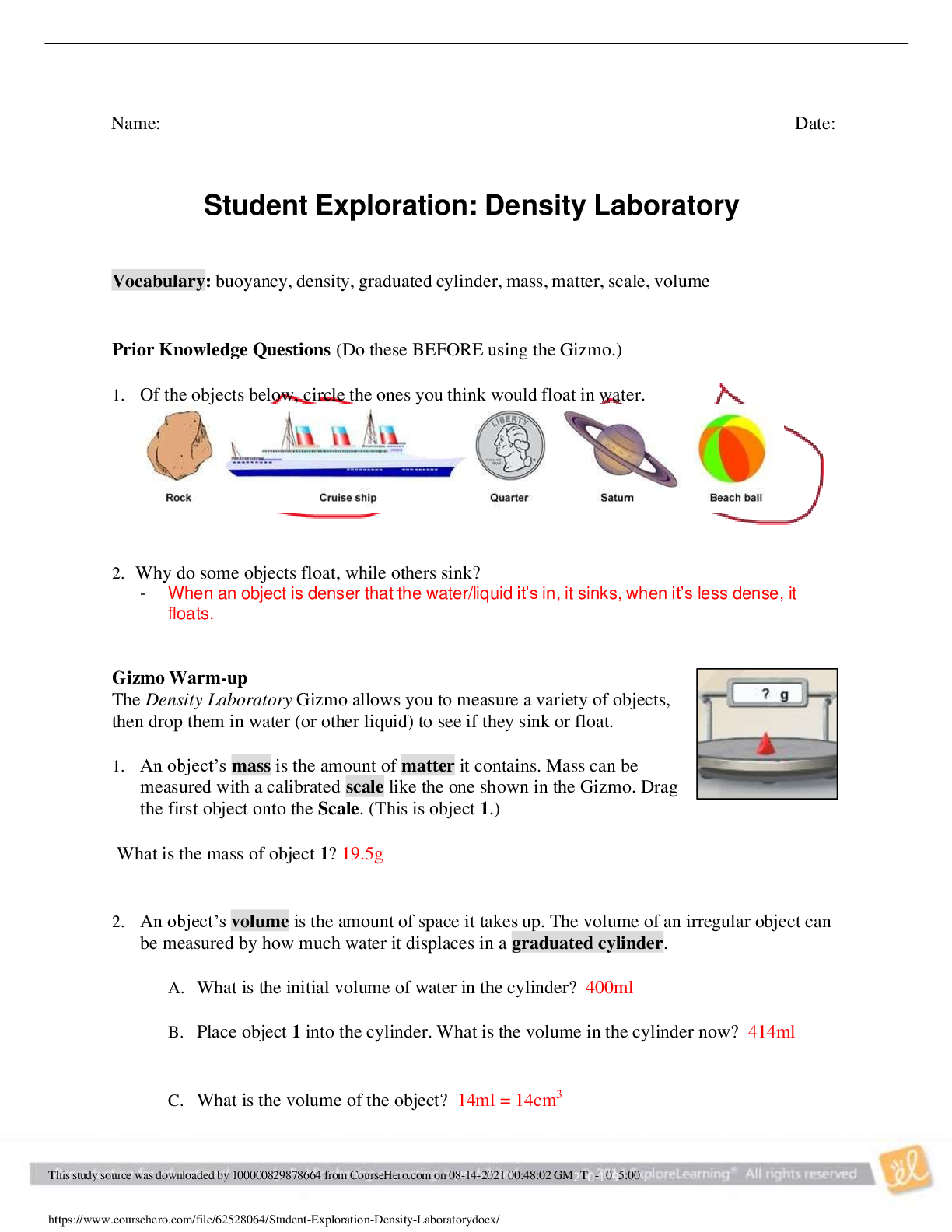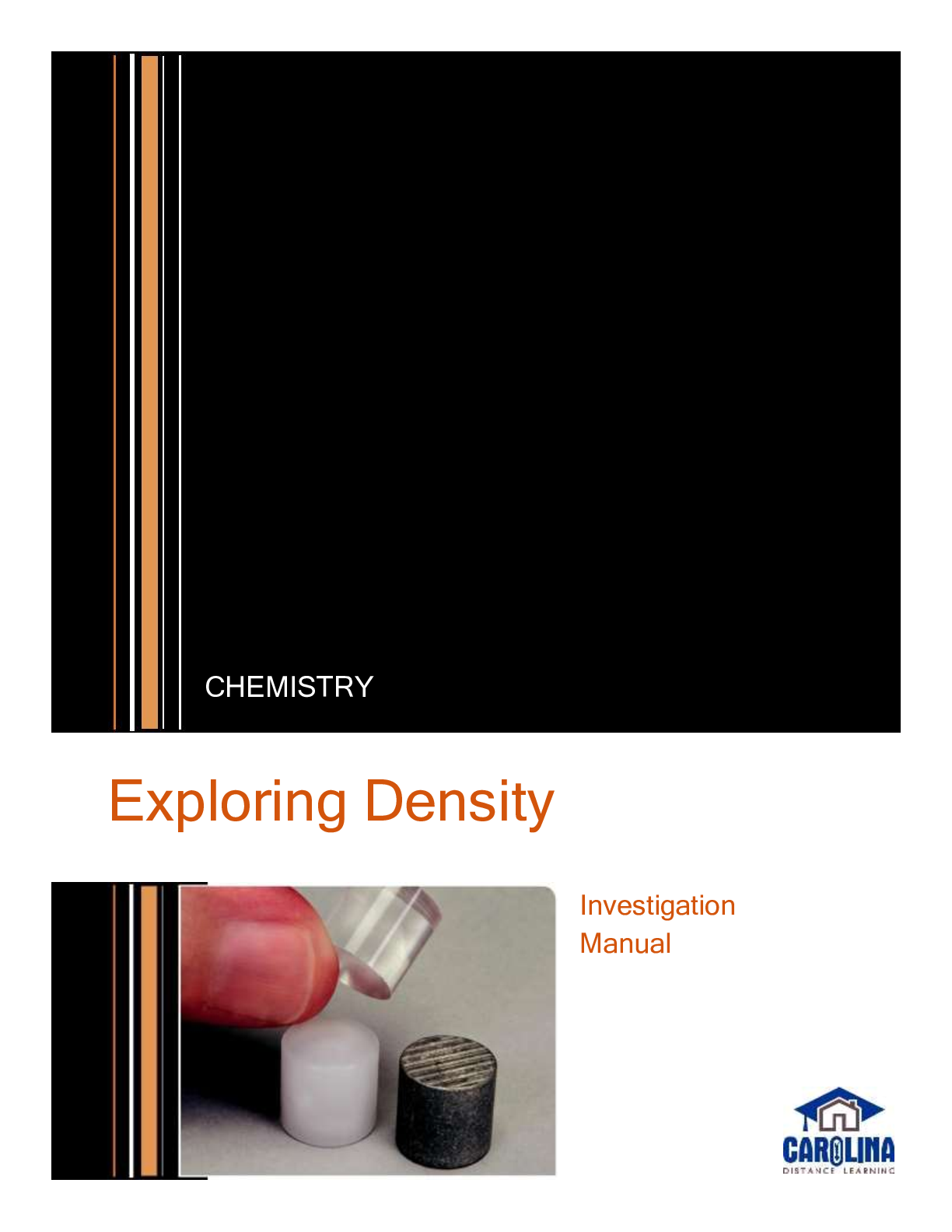Mathematics > GIZMOS > Gizmo Warm-up covalent bond sse_key (All)
Gizmo Warm-up covalent bond sse_key
Document Content and Description Below
Covalent Bonds Answer Key Vocabulary: covalent bond, diatomic molecule, Lewis diagram, molecule, noble gases, nonmetal, octet rule, shell, valence, valence electron Prior Knowledge Questions... (Do these BEFORE using the Gizmo.) [Note: The purpose of these questions is to activate prior knowledge and get students thinking. Students are not expected to know the answers to the Prior Knowledge Questions.] 1. There are eight markers in a full set, but Flora and Frank each only have seven markers. Flora is missing the red marker, and Frank is missing the blue marker. What can they do so that each has a full set of markers? . 2. Otto and Olivia each have six markers. Otto is missing the purple and green markers, and Olivia is missing the black and brown markers. What can they do so that each has a full set? Gizmo Warm-up Just like the students described above, nonmetal atoms can share electrons. As you will see in the Covalent Bonds Gizmo™, atoms form bonds in this way. To begin, check that Fluorine is selected from the Select a substance menu. Click Play ( ) to see the electrons orbiting the nucleus of each atom. 1. The outermost electrons in each atom are called valence electrons. How many valence electrons does each fluorine atom have? 2. Click Pause ( ). Drag an electron from the left atom to the right atom. Click Play. What happens? 3. Click Pause, drag an electron from the right atom to the left, and then click Play. What happens now? Activity A: Sharing electrons Get the Gizmo ready: • Click Reset. • Select Hydrogen. Introduction: The electrons that orbit the nucleus of an atom are arranged into shells. The first shell contains up to two electrons and the second contains up to eight electrons. Most elements are stable when they have eight valence electrons—a rule of thumb known as the octet rule. (Elements with less than five electrons are stable with two valence electrons.) Question: What happens when atoms share electrons? 1. Predict: Each hydrogen atom has one valence electron, but it needs two electrons to be stable. How can both hydrogen atoms each achieve a stable configuration? 2. Form a bond: Drag the electrons so that they move around both hydrogen atoms. Click Play to observe them in orbit, and then click Check. You have created a covalent bond. Congratulations, you have completed a molecule of hydrogen! Because the molecule has two atoms, it is a diatomic molecule. Click the camera ( ) icon to take a snapshot of your completed molecule. Right-click the image, and click Copy Image. Paste the image into a blank document and label the image “H2.” 3. Draw a diagram: Covalent bonds are shown in Lewis diagrams. In a Lewis diagram, dots represent unshared valence electrons and dashes represent pairs of shared electrons. Turn on Show Lewis diagram. What is the Lewis diagram for hydrogen, H2? 4. Form a bond: Now select Fluorine and create a molecule of fluorine, F2. Take a snapshot of this molecule and add it to your document. (Be sure to label each molecule you add.) What is the Lewis diagram for fluorine, F2? 5. Think and discuss: How is the formation of covalent bonds similar to kids sharing markers? How is it different? If possible, discuss your answer with your classmates and teacher. ...........................................................................continued............................................................................. [Show More]
Last updated: 1 year ago
Preview 1 out of 6 pages
Instant download
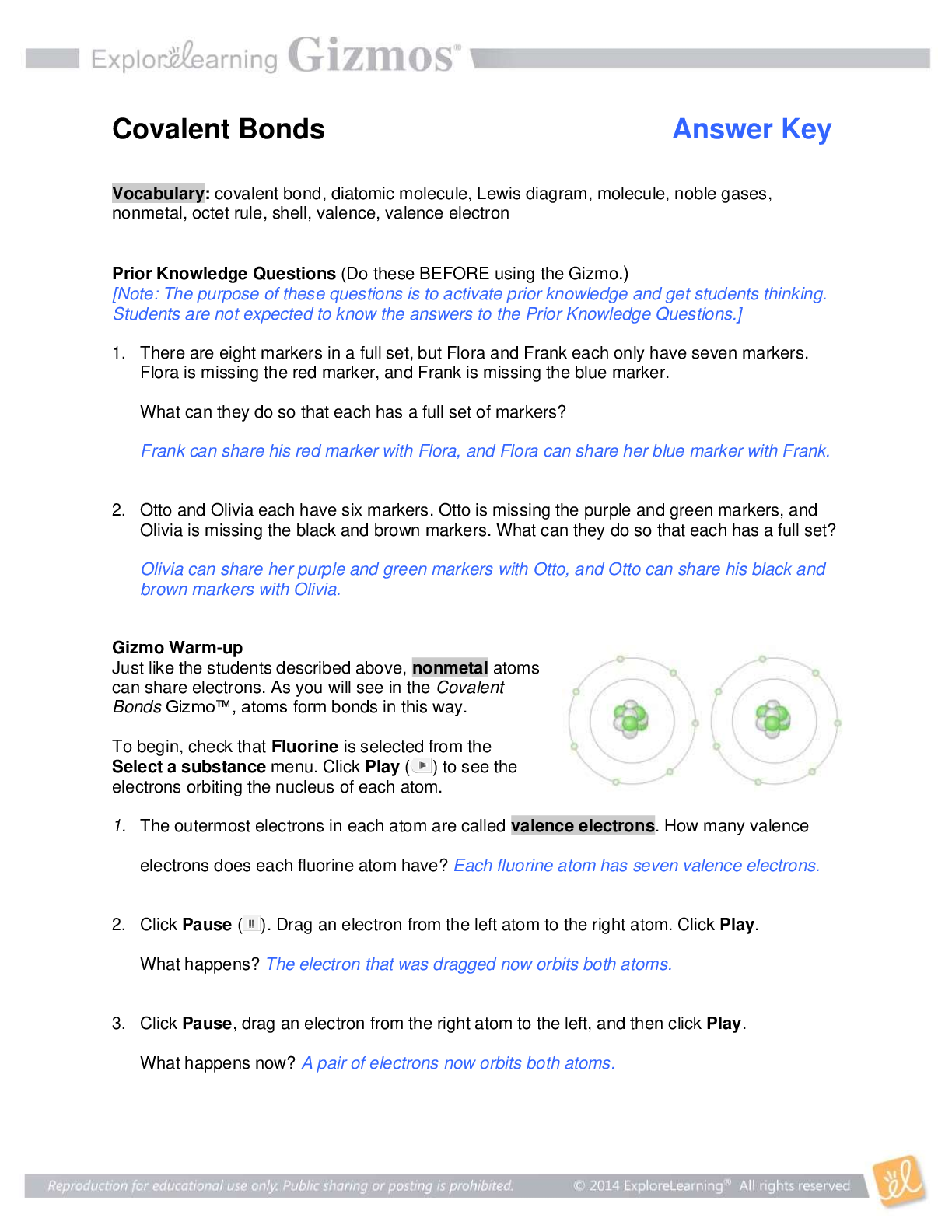
Buy this document to get the full access instantly
Instant Download Access after purchase
Add to cartInstant download
Reviews( 0 )
Document information
Connected school, study & course
About the document
Uploaded On
Aug 13, 2021
Number of pages
6
Written in
Additional information
This document has been written for:
Uploaded
Aug 13, 2021
Downloads
0
Views
519

